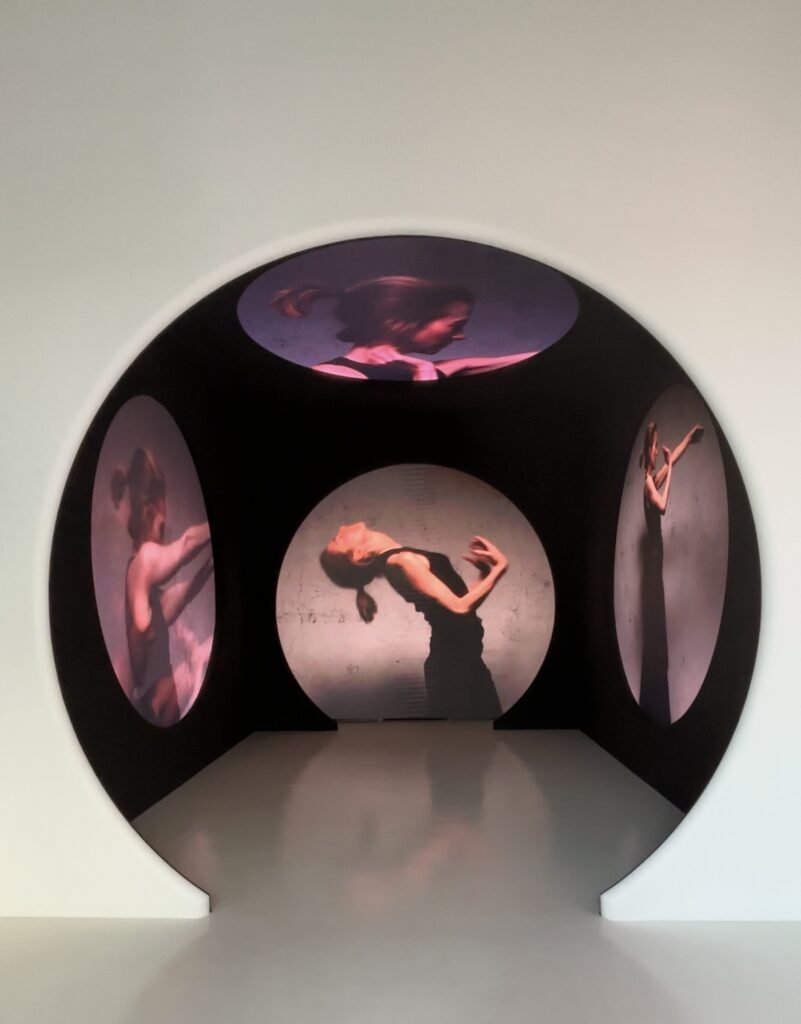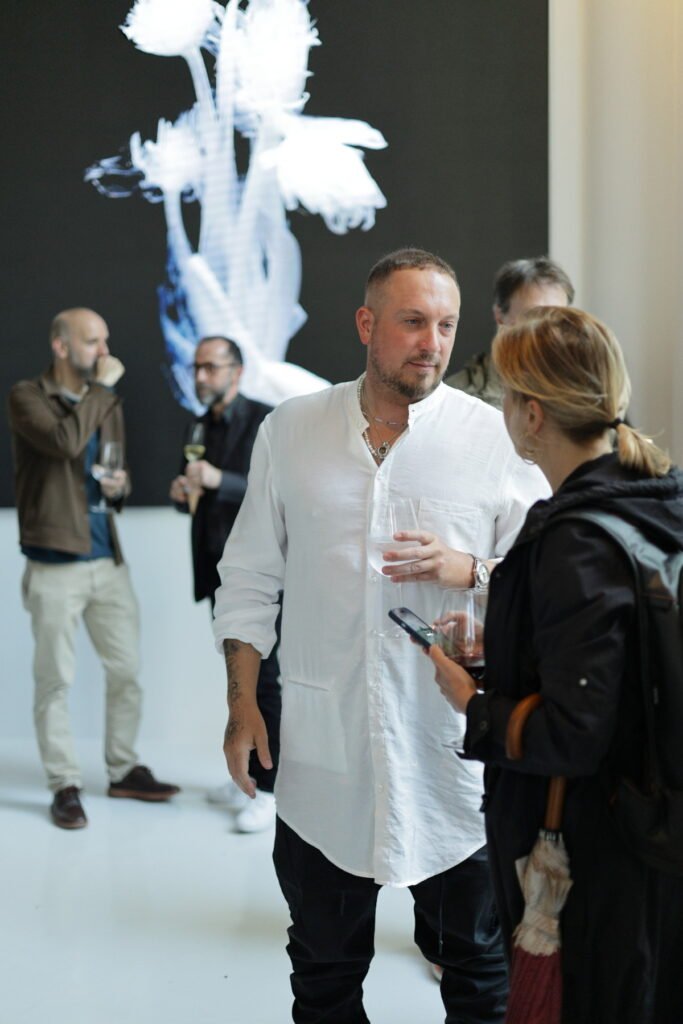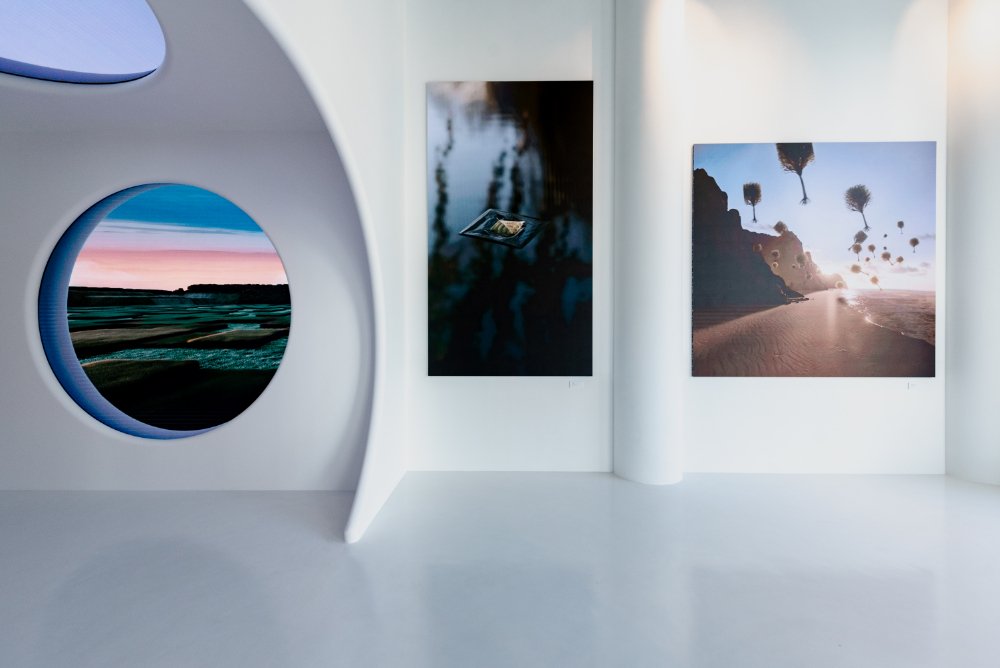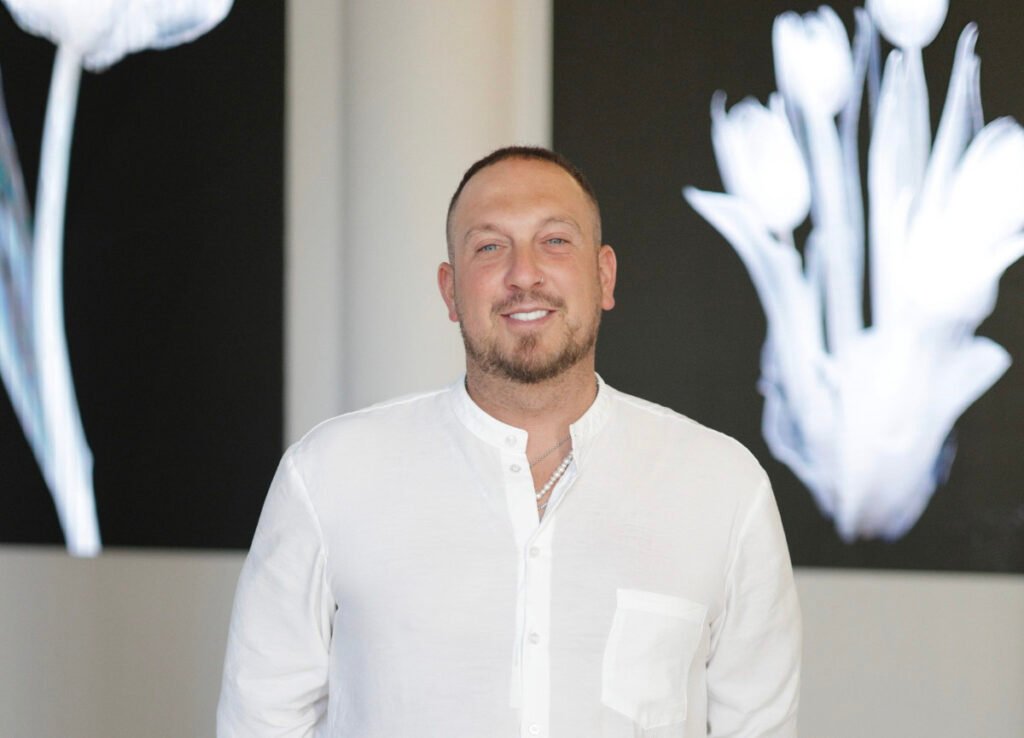In this edition of Meet the Makers, we had the pleasure of chatting with Alex Simorrè, the visionary founder of Load Gallery in Barcelona. Load Gallery is not your typical art space — it’s a hybrid gallery that fuses the physical and digital worlds, offering a unique platform for artists to push the boundaries of new media art. Alex’s background in sound, light, and LED systems plays a central role in the gallery’s design, creating an immersive experience that brings digital art to life in ways that most galleries can’t.
We talk to Alex about what inspired him to start the gallery, how technology can redefine the way we experience art, and the unique challenges of merging the tech world with the traditional art scene. Whether you’re an artist, a collector, or simply curious about the future of digital art, this conversation will leave you rethinking the possibilities of creativity in a world where screens and physical spaces collide.
What inspired you to start Load Gallery? Was there a particular moment when you knew this concept had to come to life?
I don’t have an art world background, but I have always tried to keep an eye on artists and designers I like, just for the pleasure of it. Over the years, I noticed a gap in how digital art, especially NFTs, was being exhibited and appreciated. There was a lack of dedicated spaces that could do justice to the immersive potential of digital art. It became particularly noticeable in 2021, after NFTs became the trend du jour. I realised that technology could not only showcase art but also enhance its experience, creating a seamless blend between the digital and physical worlds. That’s when I knew Load had to come to life.
Your background in sound, light, and LED systems clearly plays a role in the gallery’s design. How have these experiences shaped the way art is presented at Load Gallery?
My background helped inform the design of the gallery, where art isn’t just viewed but experienced — that is the vision of Load. You would be surprised how much creativity and even craftsmanship is involved in working with bespoke technology. With LED screens and tailored sound &light systems, I can manipulate how the art interacts with the environment, making it more than a static display. Or create a multidimensional experience where viewers are surrounded by the artwork, both visually and sonically, heightening their connection to it. I even designed a room with four screens, including one on the ceiling, which for me serves as a gate into the universe of an artist.

What was your vision when designing the screens and sound system for the gallery, and how do they enhance the viewing experience?
The screens and sound system were designed with immersion in mind. The vision was to offer something far beyond traditional galleries—a space where digital art could be showcased in its native environment, alongside physical art and objects to build a coherent narrative. I wanted to show how different formats and sizes of screen can redefine art. But there are also light, anti-glare windows, and so many more details to make art look just right. Because if display is impeccable, gallery visitors can focus on art, and not on horrid cables hanging here and there, strange makeshift constrictions that carry screens, crude surfaces. Believe me, I’ve seen a fare share of horrors.
What role do you think immersion plays in the way people connect with art, especially digital art?
Immersion is crucial, especially with digital art, because it allows viewers to feel as if they are part of the artwork. With traditional art forms, the interaction is often limited to observation. Digital art, however, invites participation, it’s interactive in its nature. By fully surrounding the viewer with light, sound, and movement, we create an emotional connection and a sense of presence within the artwork, making it a more profound experience. And it helps the audience build connections with artists.

What are some of the challenges you’ve faced in merging the tech world with the art world?
One of the main challenges we’ve faced is overcoming the perception that digital art is less valuable or ‘real’ compared to traditional art forms. Many people wonder, ‘Why buy it if you can right-click and save it?’ However, at Load, we have built an infrastructure that addresses this perception. We have developed custom technologies that allow us to exhibit, store, and distribute digital art with simplicity and security, while ensuring a seamless integration into its physical environment, so the art is displayed in the best possible way.
Additionally, we have tackled the technical aspects of presentation, making sure that the technology works flawlessly without disrupting the artistic experience. It’s this combination of technological precision, security, and artistic vision that sets us apart and allows us to push the boundaries of how digital art is perceived and experienced.
Can you tell us more about the mission to provide artists with a ‘sandbox’ to experiment with new media art? What are some of the boundaries you hope to see pushed?
I want Load to be a space where artists can experiment freely with new media, unconstrained by traditional exhibition limitations. The gallery acts as a ‘sandbox’ where they can test out ideas using cutting-edge technology—for example, they had a “wild” idea, but didn’t know how to bring it to life because they lack technical knowledge. We hope to see boundaries pushed in terms of how digital and physical elements can be blended, how viewers interact with art, and how data and real-time inputs can shape the artwork itself.
For example, Luna Ikuta installed a pool in the gallery, the visitors could throw soluble petals in the water. For the upcoming show, Fine Print, Ana Maria Caballero prepares a sculpture that evolves in real time depending on the reactions that the visitors submit. In all cases, the goal is to encourage artists to explore new narratives that may not have been possible in more traditional settings. I do hope that in some time we will build a reputation of a space where artists come with their craziest ideas.
“I hope in time we will build a reputation of a space where artists come with their craziest ideas.”

How do you see the relationship between traditional art forms and digital art evolving in the coming years?
I believe we’re moving towards a future where the lines between traditional and digital art will continue to blur. Digital art is becoming more accepted within established institutions, which is long overdue. Computers and the internet are the major inventions of the second half of 20th century, so digital art should arguably dominate the market as the art of this century. Traditional art will always have its place, but digital art allows for new ways of storytelling and interaction that appeal to a younger, more tech-savvy audience. As digital technology continues to evolve, we’ll see even more innovative hybrid forms emerge, merging the best of both worlds.
The gallery’s platform offers an innovative way to stream, buy, and rent digital art. How do you see this changing the way people experience and collect art?
Our platform is designed to make digital art more accessible and collectible. By offering streaming, buying, and renting options, we provide flexibility that fits into modern lifestyles — imagine, you rent and don’t want to buy paintings, because each time you move, you’ll have to carry them with you. Or you live between two homes. We enable collectors easily access and display artworks across multiple locations, while artists benefit from a broader reach. This approach also lowers the barrier for entry into art collecting, particularly for younger generations. I believe this will allow more people to connect with and own art in ways that were previously impossible.

What advice would you give to young artists or curators who want to explore digital art and NFTs but aren’t sure where to start?
First, decide why are you doing it. Is technology going to complement the message you are willing to deliver, enhance it? Did you see, let’s say a generative art series and it just clicked? Because if you are a gifted painter and want to try digital art just to ride the trend, well, that’s probably not gonna work for you. If you’ve decided it’s your cup of tea, my advice would be to dive in and start experimenting.
The digital art world is still evolving, and there’s a lot of room for innovation. Learn the tools, whether it’s creative coding, 3D modelling, or blockchain for NFTs, and don’t be afraid to collaborate with others from different fields. Find your community—there are many online spaces where digital artists and curators share knowledge and opportunities. And most importantly, believe in what you do.
Can you share any exciting upcoming exhibitions or projects that Load Gallery is working on?
Fine Print is a show by two poets and artists, Ana Maria Caballero and aurece vettier. I love it because it manifests what technology can add to art—or better to say how artists transform a very established field such as poetry. When AI is everywhere, it also gives a commentary on its role in the creative process — both Ana and aurece use it, aurece is one of the handful of artists who train his own algorithms.
After, we will have a visually stunning show of works by Mareo Rodriguez. And a group show, because the summer group show was a huge success. But we are still choosing the artists.




Pingback: Load Gallery Presents Mareo Rodríguez’s Portals Series
Pingback: The Load Gallery Presents Group Show Blurred Lines
Pingback: Load gallery presents 'Visions’, a solo show by Pilar Zeta - FrikiFish Art Magazine
Pingback: Barcelona’s Load Gallery Shines at Inaugural Loop Lab Busan
Pingback: When Landscapes Go Digital - Quayola’s Dissected Palette,
Pingback: BODYSCAPES at Load Gallery Turns the Gaze Inward - FrikiFish Art Magazine